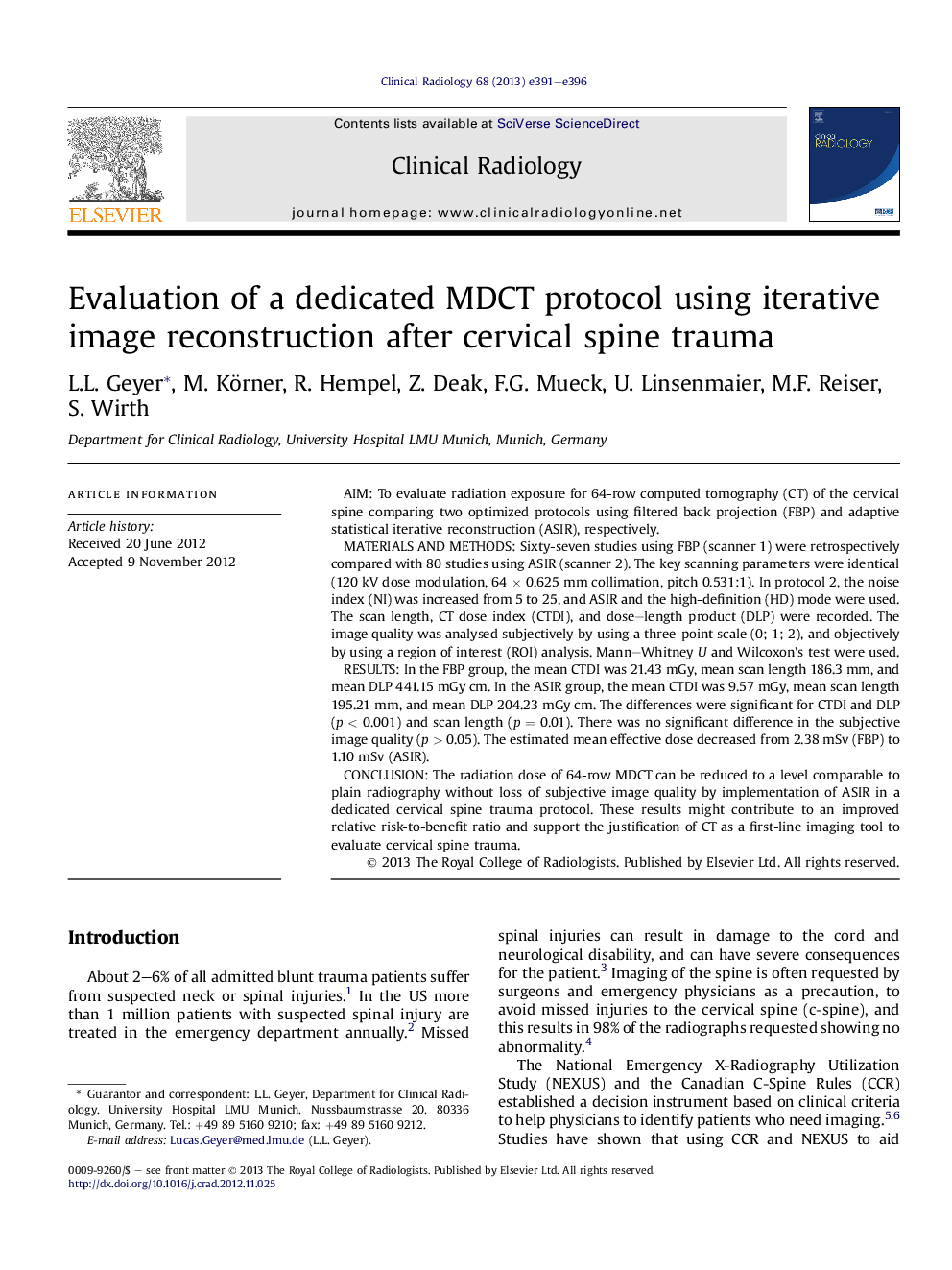| Article ID | Journal | Published Year | Pages | File Type |
|---|---|---|---|---|
| 3982491 | Clinical Radiology | 2013 | 6 Pages |
AimTo evaluate radiation exposure for 64-row computed tomography (CT) of the cervical spine comparing two optimized protocols using filtered back projection (FBP) and adaptive statistical iterative reconstruction (ASIR), respectively.Materials and methodsSixty-seven studies using FBP (scanner 1) were retrospectively compared with 80 studies using ASIR (scanner 2). The key scanning parameters were identical (120 kV dose modulation, 64 × 0.625 mm collimation, pitch 0.531:1). In protocol 2, the noise index (NI) was increased from 5 to 25, and ASIR and the high-definition (HD) mode were used. The scan length, CT dose index (CTDI), and dose–length product (DLP) were recorded. The image quality was analysed subjectively by using a three-point scale (0; 1; 2), and objectively by using a region of interest (ROI) analysis. Mann–Whitney U and Wilcoxon's test were used.ResultsIn the FBP group, the mean CTDI was 21.43 mGy, mean scan length 186.3 mm, and mean DLP 441.15 mGy cm. In the ASIR group, the mean CTDI was 9.57 mGy, mean scan length 195.21 mm, and mean DLP 204.23 mGy cm. The differences were significant for CTDI and DLP (p < 0.001) and scan length (p = 0.01). There was no significant difference in the subjective image quality (p > 0.05). The estimated mean effective dose decreased from 2.38 mSv (FBP) to 1.10 mSv (ASIR).ConclusionThe radiation dose of 64-row MDCT can be reduced to a level comparable to plain radiography without loss of subjective image quality by implementation of ASIR in a dedicated cervical spine trauma protocol. These results might contribute to an improved relative risk-to-benefit ratio and support the justification of CT as a first-line imaging tool to evaluate cervical spine trauma.
